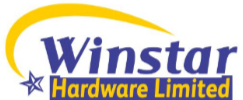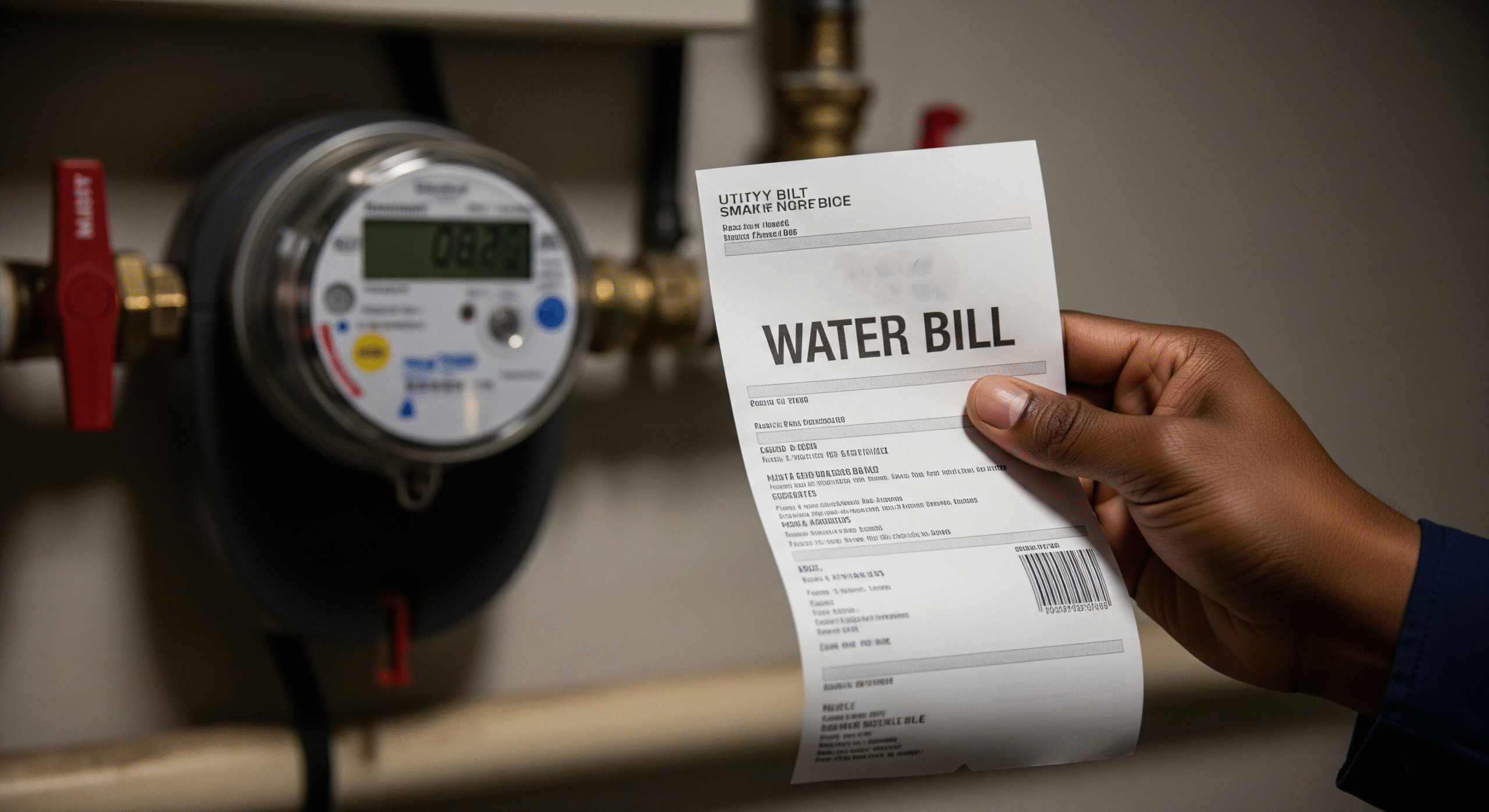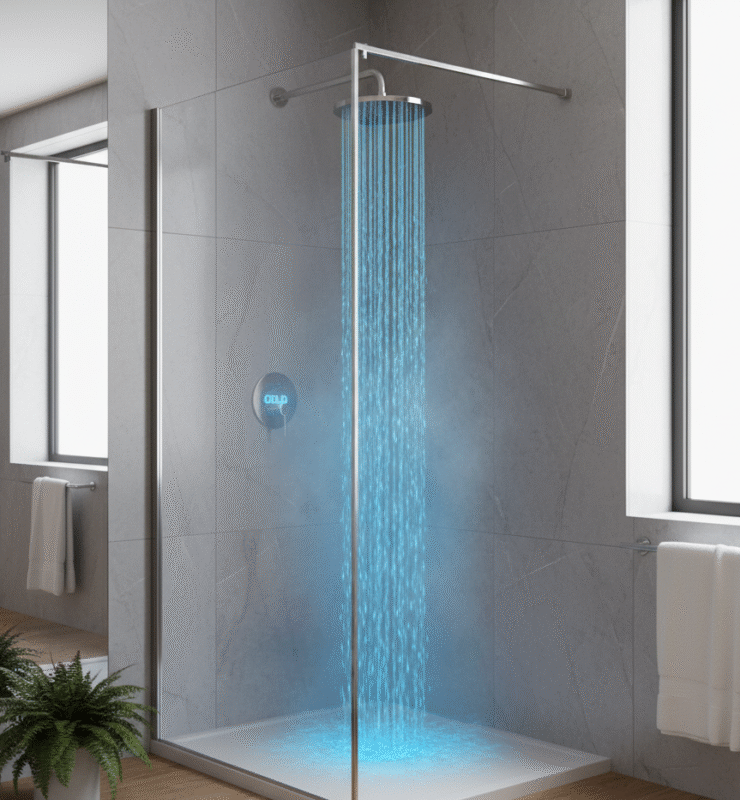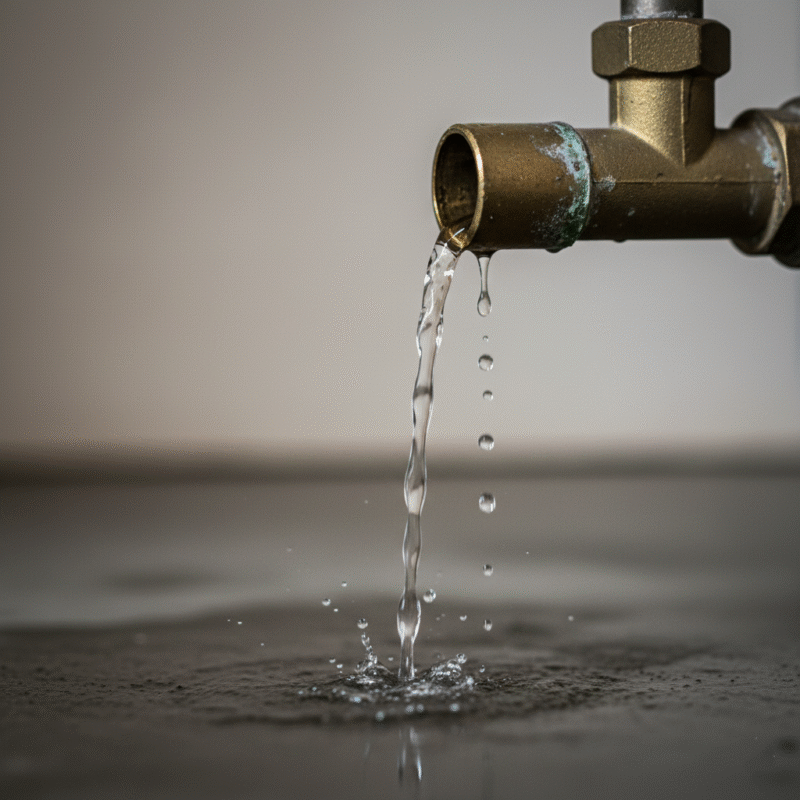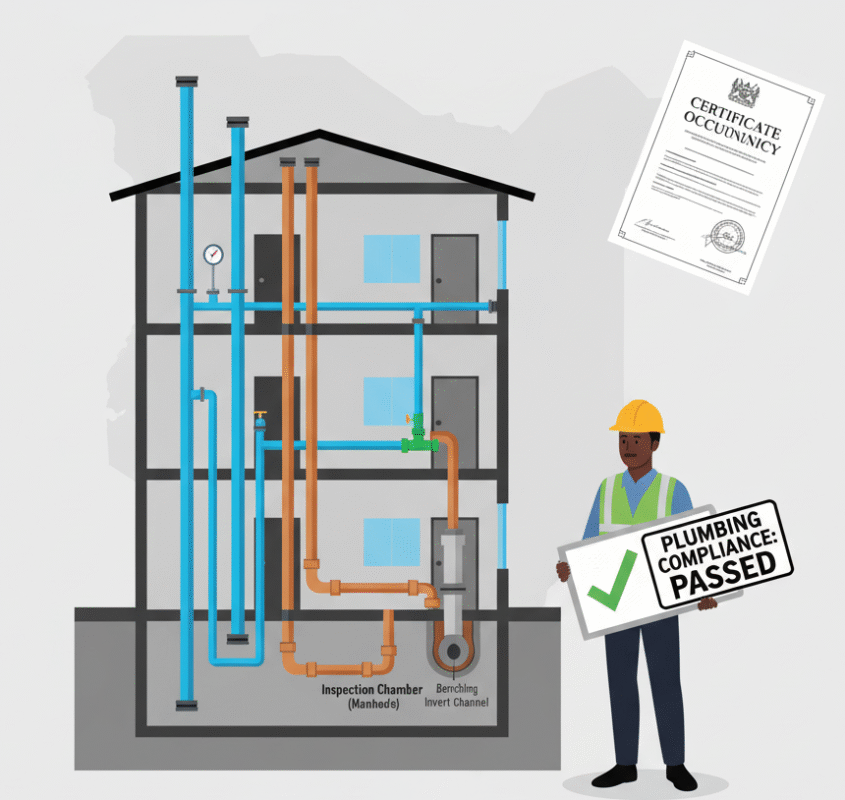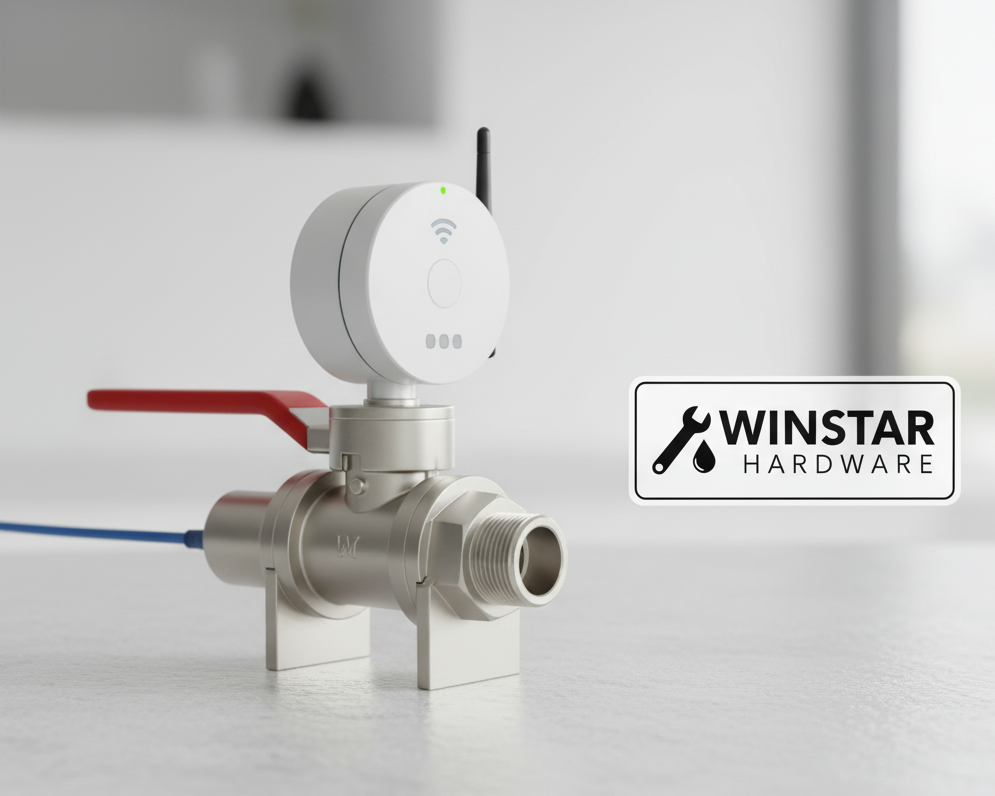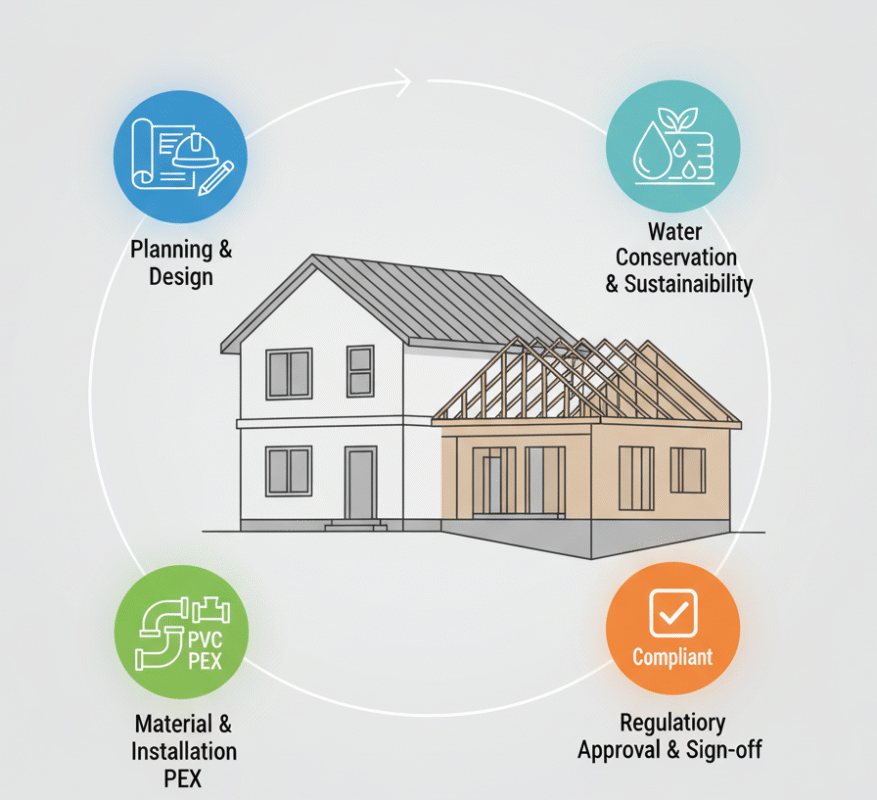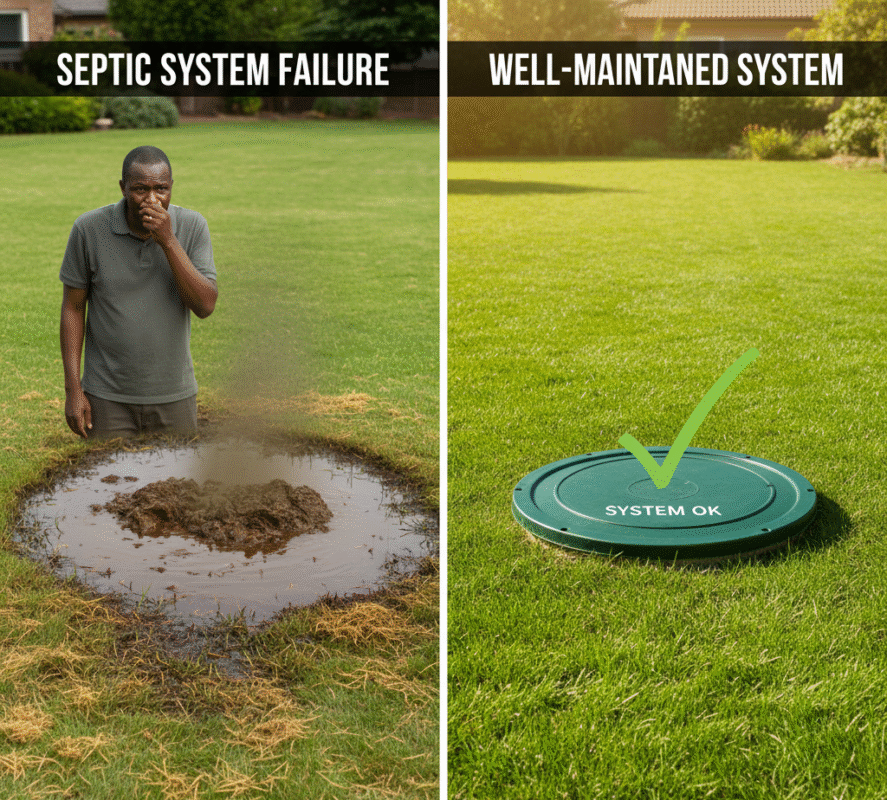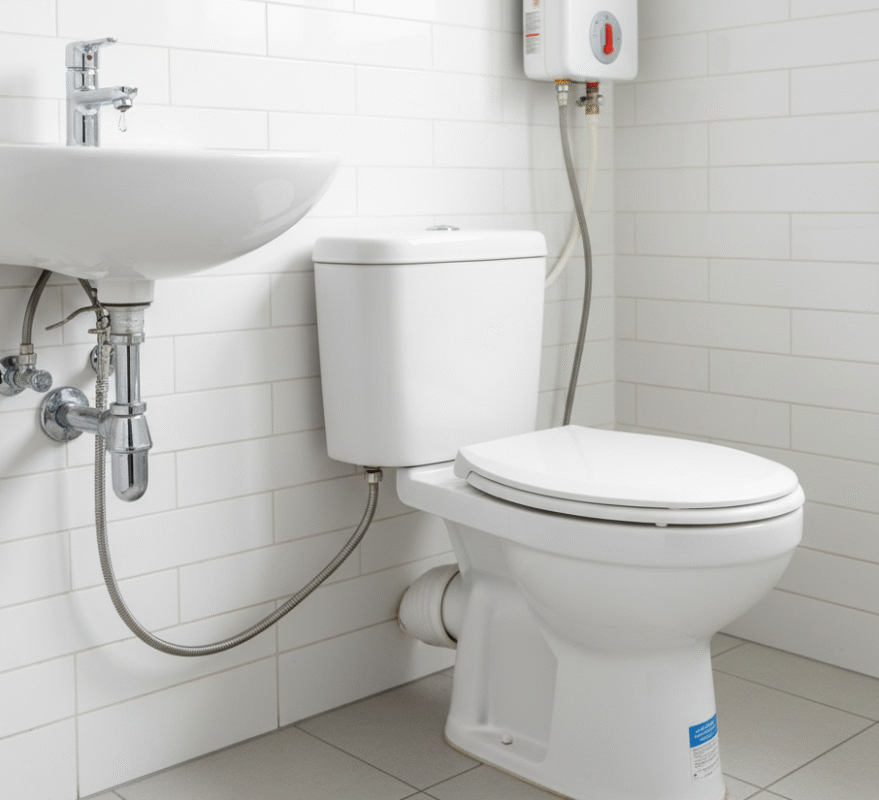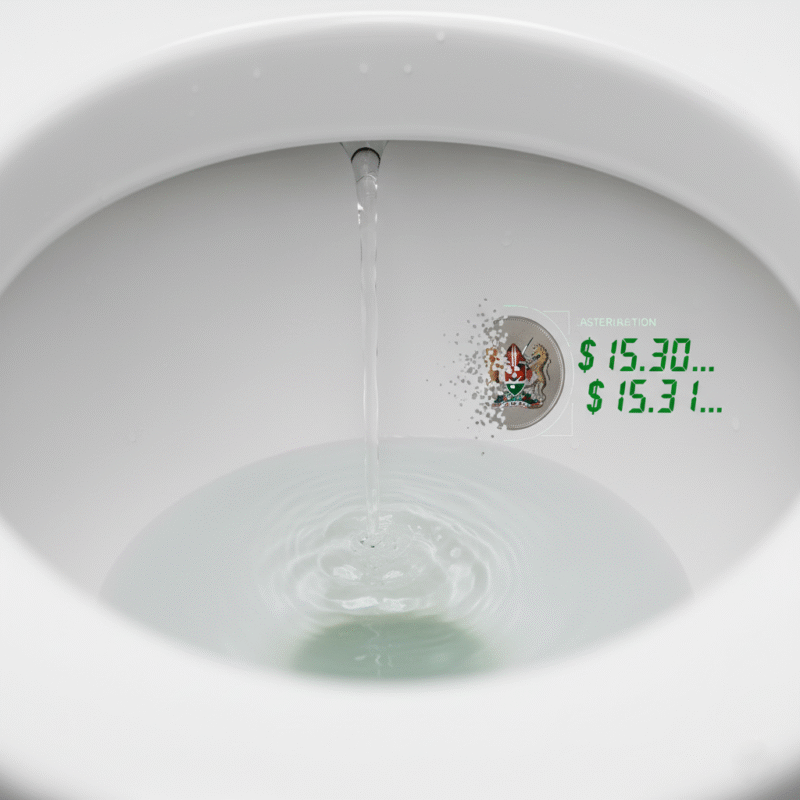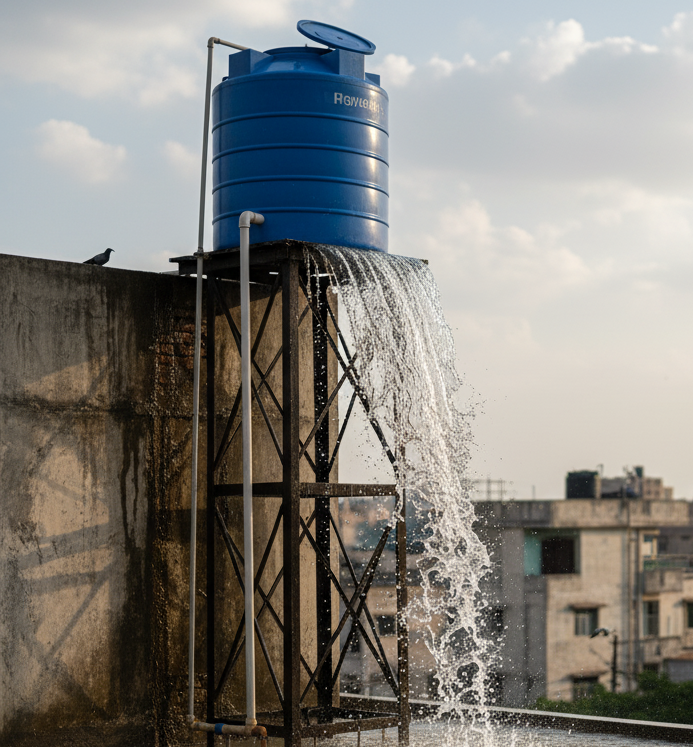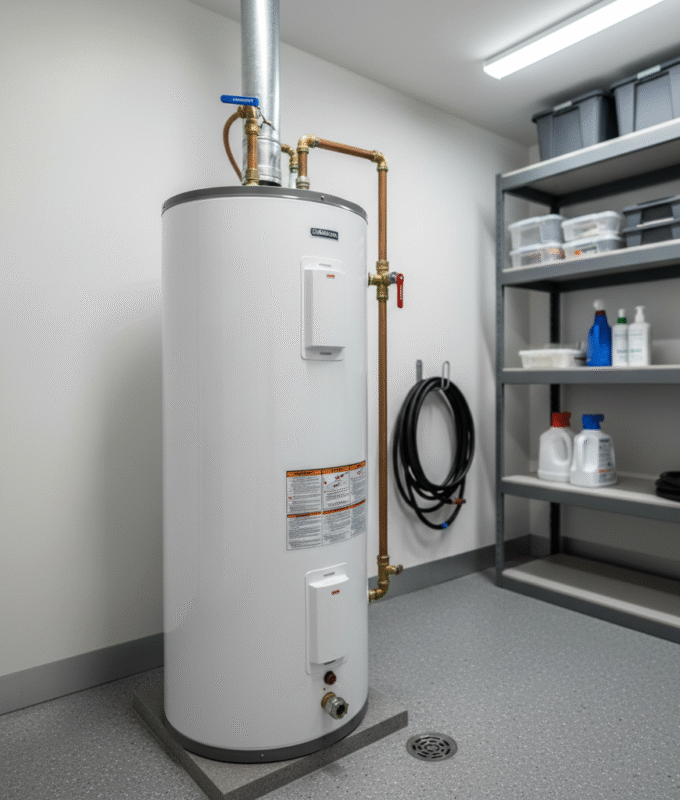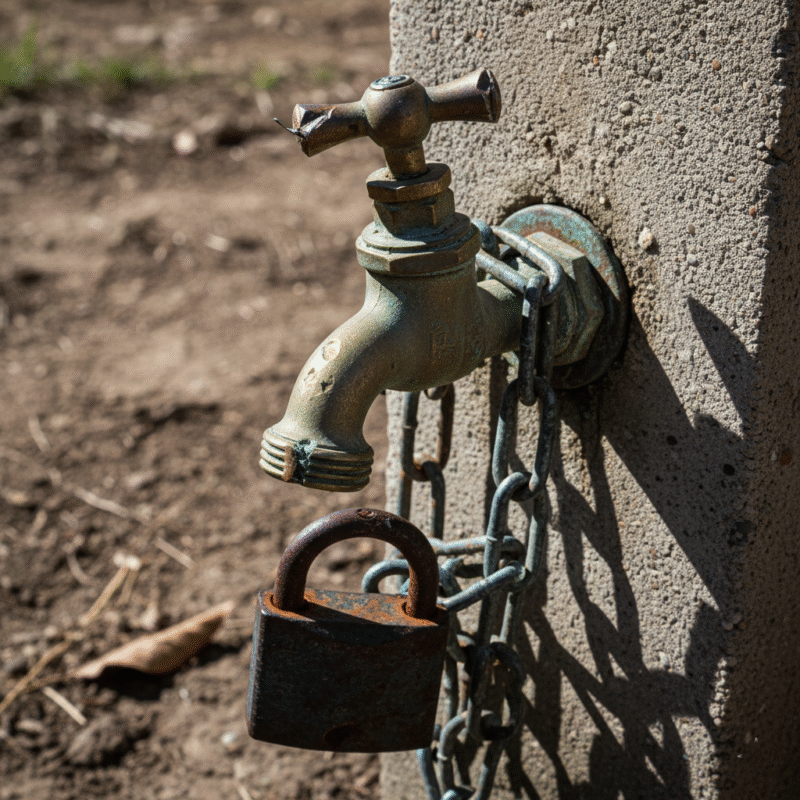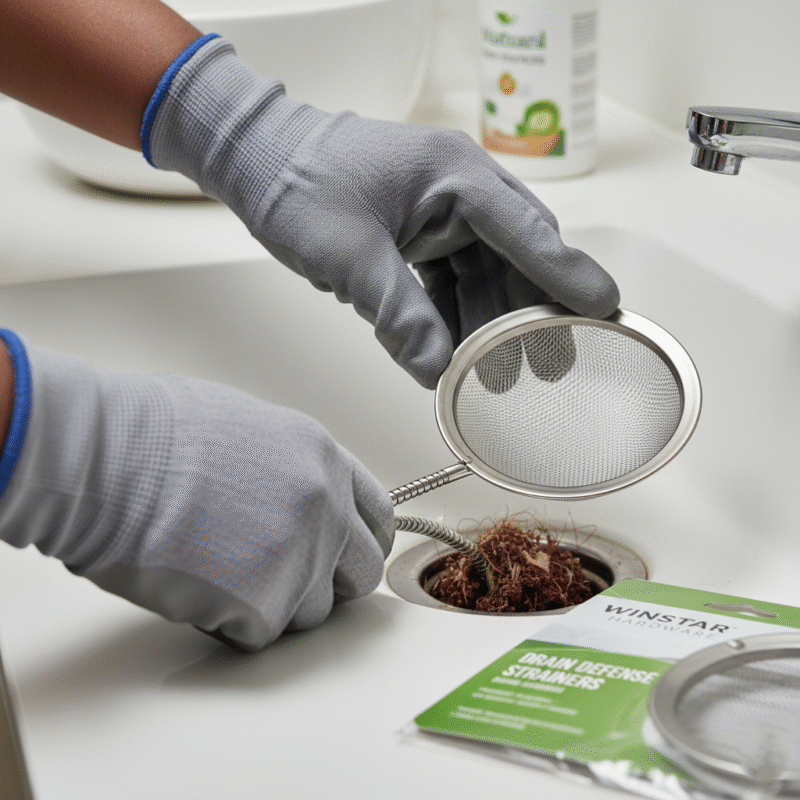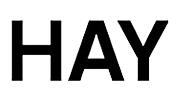We’ve all been there: you open your water bill, and your heart sinks. The number is higher than you expected, and you’re left wondering, “Where did all that water go?” The stress of an unexpectedly high water bill is a frustrating reality for many Kenyan households, especially with the rising cost of utilities.
But what if your water bill wasn’t a mystery? What if you had the power to understand exactly where your water—and your money—is going?
Here at The Winstar Hardware blog, we’re going to demystify your water bill and empower you with the knowledge to take control. We’ll help you identify the common culprits behind a high water bill, ranging from silent leaks to inefficient habits, and provide you with a wealth of practical and cost-effective solutions. By the end of this read, you’ll be equipped to not only lower your monthly costs but also contribute to the vital cause of water conservation in our community.
Section 1: Decoding Your Water Bill
Before you can tackle the problem of a high water bill, you need to understand its anatomy. A typical water bill in Kenya is more than just a single number; it’s a breakdown of your consumption, fixed costs, and other charges. Understanding each component is the first and most crucial step toward controlling your spending.
1. The Consumption Charge (The Main Event):
This is the biggest and most variable part of your bill. It’s a charge based on the amount of water you actually use, measured in cubic meters (m3). One cubic meter is equivalent to 1,000 liters.
The key to understanding this charge is to know that it is often tiered. This means the cost per cubic meter increases as your consumption rises. For example, a common tiered structure might look something like this:
- Tier 1: 0 – 10 m3 at a lower rate per m3.
- Tier 2: 11 – 25 m3 at a higher rate per m3.
- Tier 3: 26 m3 and above at the highest rate per m3.
This tiered system means that every extra liter you save is not just a small saving; it could be the liter that keeps you in a lower, more affordable tier. This is a powerful incentive for conservation.
Detailed Breakdown of a Tiered Pricing Structure
Water tariffs in Kenya are often based on a tiered or “block” system. This means the more water you consume, the more you pay for each additional cubic meter (m³). Think of it like a staircase: each step up in consumption costs a little more than the last. This system is designed to promote water conservation.
Let’s use a hypothetical, but realistic, pricing model to illustrate how this works for a typical household in Kenya.
Hypothetical Monthly Tariff Structure (Ksh):
- Tier 1 (0–6 m³): Ksh 70 per m³
- Tier 2 (7–20 m³): Ksh 95 per m³
- Tier 3 (21–50 m³): Ksh 100 per m³
Now, let’s calculate the total water consumption and sewerage charges for three different household scenarios. For the sewerage charge, we’ll use a standard rate of 75% of the water consumption charge. We’ll also include a hypothetical fixed fee of Ksh 100 for all bills.
Scenario 1: The Water-Conscious Household (10 m³ Consumption)
This family uses just enough water to meet their daily needs. Their consumption of 10 m³ falls entirely within Tier 1 (0–6 m³) and Tier 2 (7–20 m³).
- Tier 1 Water Charge: 6 m³ x Ksh 70/m³ = Ksh 420
- Tier 2 Water Charge: The remaining 4 m³ (10 m³ – 6 m³) x Ksh 95/m³ = Ksh 380
- Total Water Consumption Charge: Ksh 420 + Ksh 380 = Ksh 800
- Sewerage Charge: 75% of Ksh 800 = Ksh 600
- Fixed Fee: Ksh 100
- TOTAL BILL: Ksh 800 + Ksh 600 + Ksh 100 = Ksh 1,500
Scenario 2: The Average Household (20 m³ Consumption)
This family has a moderate water usage. Their consumption takes them through all of Tier 1 and Tier 2.
- Tier 1 Water Charge: 6 m³ x Ksh 70/m³ = Ksh 420
- Tier 2 Water Charge: The remaining 14 m³ (20 m³ – 6 m³) x Ksh 95/m³ = Ksh 1,330
- Total Water Consumption Charge: Ksh 420 + Ksh 1,330 = Ksh 1,750
- Sewerage Charge: 75% of Ksh 1,750 = Ksh 1,312.50
- Fixed Fee: Ksh 100
- TOTAL BILL: Ksh 1,750 + Ksh 1,312.50 + Ksh 100 = Ksh 3,162.50
Scenario 3: The High-Consumption Household (30 m³ Consumption)
This household uses a significant amount of water. Their usage not only fills Tier 1 and Tier 2 but also pushes them into the most expensive bracket, Tier 3.
- Tier 1 Water Charge: 6 m³ x Ksh 70/m³ = Ksh 420
- Tier 2 Water Charge: 14 m³ x Ksh 95/m³ = Ksh 1,330
- Tier 3 Water Charge: The remaining 10 m³ (30 m³ – 20 m³) x Ksh 100/m³ = Ksh 1,000
- Total Water Consumption Charge: Ksh 420 + Ksh 1,330 + Ksh 1,000 = Ksh 2,750
- Sewerage Charge: 75% of Ksh 2,750 = Ksh 2,062.50
- Fixed Fee: Ksh 100
- TOTAL BILL: Ksh 2,750 + Ksh 2,062.50 + Ksh 100 = Ksh 4,912.50
As you can see, even a small increase in water consumption can lead to a significant jump in your total bill due to the tiered pricing structure. Knowing your consumption tier is the first step toward taking control and lowering your bill.
For more information on the complexities of water tariff structures, you can watch this video.
PS Korir on water tariffs in Kenya
2. The Sewerage Charge (The Silent Partner):
This fee, often listed as “Sewerage,” “Sanitation,” or “Waste Disposal,” is a charge for the treatment and disposal of wastewater. It is almost always calculated as a percentage of your total water consumption charge. If your water consumption goes up, your sewerage charge goes up too. This is why every drop you save counts twice!
3. Fixed Fees and Other Charges:
These are generally smaller, non-negotiable costs that are added to your bill regardless of how much water you use. They can include things like a meter rent fee, a service charge, or a value-added tax (VAT) on the total amount. While these fees are a small part of the total, it’s important to understand them so you can accurately pinpoint where your high costs are coming from.
The Crucial First Step: Reading Your Own Water Meter
Understanding how to read your water meter is a key step in controlling your consumption and spotting potential issues early. While meter types can vary, most fall into two main categories: analog and digital.
How to Read an Analog Water Meter
An analog meter is the classic mechanical dial you’re likely familiar with. It typically has a series of rotating dials or a single odometer-style display with black and red numbers.
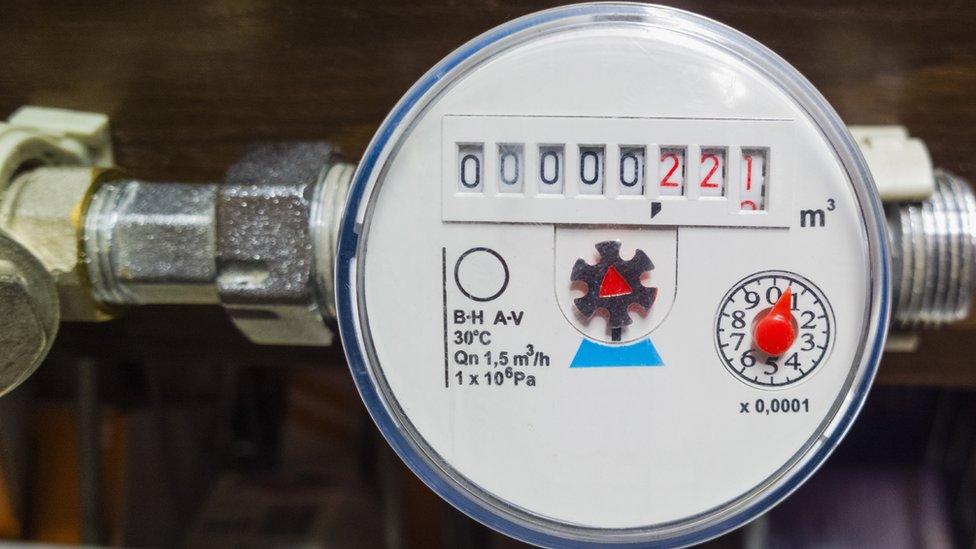
- Read the Black Numbers: These numbers, usually on a white or black background, represent the total cubic meters (m3) of water consumed. This is the figure used to calculate your bill, as utility companies charge per m3.
- Read the Red Numbers: The red numbers or a separate dial with a red needle indicate liters. These are for tracking smaller usage amounts and are not included in your bill.
- The Leak Detector: Many analog meters have a small red or black triangle or star-shaped wheel. This is the leak detector. If it is spinning when all water outlets are off, it’s a strong sign of a leak.
To take a reading, simply note the numbers shown in the black-and-white odometer from left to right.
How to Read a Digital Water Meter
Digital meters are more modern and typically easier to read, as they display the consumption on an electronic screen.
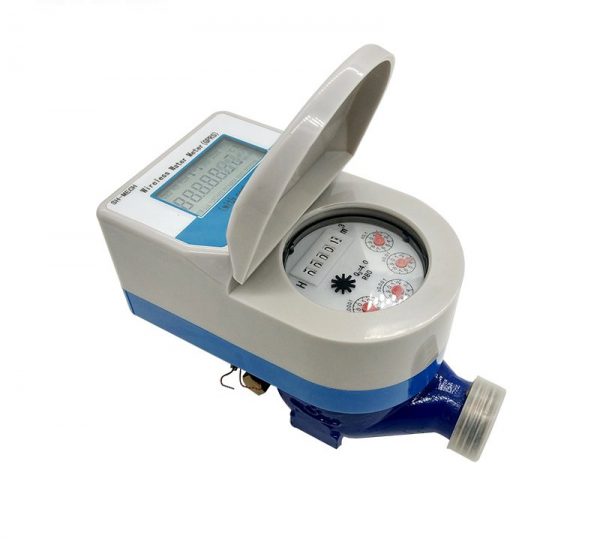
- Activate the Display: To conserve power, many digital meters have a blank screen. You may need to lift a lid, press a button, or even use a light source to activate the display.
- Total Consumption: The main number on the screen is your total water usage, usually measured in kiloliters (kL) or cubic meters (m3). This is the number you need for your bill.
- Check for Leaks: Similar to analog meters, digital meters have a flow rate indicator that shows if water is currently passing through. If this indicator is showing a number greater than zero when all taps are off, you likely have a leak.
Troubleshooting Common Water Meter Issues
1. A Foggy Meter Face
A foggy or cloudy meter face is often caused by condensation, which can make the numbers difficult to read. This can happen due to temperature changes or moisture in the meter box.
- Tap the Meter: Gently tap the glass with the back of a screwdriver or a similar tool to clear the condensation.
- Wipe it Down: If you can safely access it, wipe the face with a warm cloth.
- Drain the Box: If there’s standing water in the meter box, you can use a small cup or sponge to bail it out.
If the problem persists, it may be a sign of a faulty seal on the meter, and you should contact your water company for assistance.
2. A Spinning Dial When No Water is Being Used
If your water meter’s leak detector or dial is spinning even when all faucets, toilets, and appliances are turned off, you have a leak. This is the most common cause of an unexpectedly high water bill.
How to Test for a Leak:
- Turn Off All Water: Ensure every single water outlet in and outside your home is off. This includes taps, showers, washing machines, and any irrigation systems.
- Take a Reading: Note the exact reading on your meter and wait for at least 15-30 minutes. The longer you wait, the more accurate the test.
- Check the Meter Again: After the waiting period, take another reading. If the number has changed, even slightly, it indicates a leak.
Section 2: The Top Culprits Behind a High Water Bill
Now that you know how to read your bill, let’s play detective and find out why it might be so high.
The Hidden Leak
A small leak might seem insignificant, but a continuous drip or a slow seep can waste thousands of liters a month, putting you squarely in a higher billing tier.
The Dripping Faucet
A faucet that drips once per second can waste over 10,000 liters of water in a single month! This is often due to a worn-out washer or a bad seal. The good news? This is a very easy DIY fix.
The Silent Toilet Leak
This is arguably the most common and largest source of household water waste. A slow, continuous leak from the toilet tank into the bowl can go unnoticed for months.
- How to Test for a Silent Leak: The dye test is simple and effective. Add a few drops of food coloring to your toilet tank (the reservoir behind the bowl). Do not flush. Wait for about 15-20 minutes. If you see any of the colored water in the toilet bowl, you have a leak. This usually means the flapper valve at the bottom of the tank is worn out and needs to be replaced.
The Invisible Underground Leak
If you’ve checked all your faucets and toilets and still suspect a leak, it could be in your main water line.
- How to Test for an Underground Leak: Turn off every single tap and appliance in your home that uses water (washing machine, dishwasher, etc.). Go out and check your water meter. If the little dial on the meter is still spinning, you have a leak somewhere in your system. This might require a professional plumber to locate and repair.
2. Inefficient Habits (The Lifestyle Factor)
Our daily routines can significantly impact our water usage, often without us even realizing it.
- Long Showers: A typical shower uses around 10-20 liters of water per minute. A 10-minute shower could use 100-200 liters, while a 5-minute shower cuts that in half.
- Leaving the Tap Running: While brushing your teeth, a running tap can waste up to 10 liters of water. That’s a minimum of 20 liters per day for a two-person household just on teeth brushing!
- Washing Dishes: Running water to wash dishes can be extremely wasteful. Filling a basin with water for washing and another for rinsing is a much more efficient method.
- Over-Watering the Garden: Watering your garden during the hottest part of the day leads to rapid evaporation. The water never reaches the roots, and you end up using more to get the same results.
3. Outdated Fixtures and Appliances:
Older plumbing fixtures and appliances were not designed with water conservation in mind. They are often a major source of unnecessary consumption.
- Old Toilets: Toilets manufactured decades ago can use up to 20 liters per flush. A modern, water-efficient toilet uses 3-6 liters per flush, saving thousands of liters annually.
- Inefficient Showerheads: Older showerheads are often “water hogs,” dispensing large volumes of water per minute.
- Washing Machines: Some older washing machines use a staggering amount of water for each cycle. If you have an older machine, consider making sure you only run it when you have a full load.
Section 3: Practical & Cost-Effective Solutions
Now for the good news: solving these problems is often simpler and more affordable than you think. At Winstar Hardware, we provide not just the tools, but also the knowledge to help you fix these issues and reduce your water bill.
1. The Quick & Easy Fixes
Repairing Leaks:
- For a Dripping Faucet: You’ll need a screwdriver, an adjustable wrench, and a new washer or O-ring. These are inexpensive parts that can be easily replaced. For step-by-step instructions on how to fix a dripping faucet, check out our guide on leaky pipe repair.
- For a Leaky Toilet Flapper: We have replacement flapper valves that are easy to install and will immediately stop the leak.
- Changing Habits: These fixes require zero investment and can have a big impact.
- Take Shorter Showers: Challenge your family to take five-minute showers.
- Turn off the Tap: Get into the habit of turning off the water while brushing your teeth, shaving, or soaping your hands.
- Efficient Gardening: Water your garden in the early morning or late evening to minimize evaporation.
2. The Smart Investments
These are the solutions that provide the biggest long-term savings by permanently reducing your consumption. They are affordable and will pay for themselves in reduced water bills.
Water-Saving Taps and Showerheads
Invest in fixtures equipped with aerators and flow restrictors. These devices mix air with the water, creating a consistent, pressurized stream that uses significantly less water.
Dual-Flush Toilets
A modern, dual-flush toilet has two buttons: one for a light flush for liquid waste and another for a full flush for solid waste. This simple design can save a family of four tens of thousands of liters of water per year.
Ready to make the switch to more efficient plumbing? Our full guide on water-efficient fixtures has everything you need to know to get started.
Rainwater Harvesting Systems
For many Kenyans, rainwater harvesting is a powerful way to reduce reliance on municipal water and save money. You can collect rainwater for non-potable uses like flushing toilets, washing clothes, and watering your garden. We have the necessary components for a basic system:
- Gutters and Downspouts: To collect the water from your roof.
- Pipes: We offer a variety of HDPE and PVC pipes to connect the downspouts to your storage tank.
- Storage Tanks: We can help you choose the right size and type of tank for your home.
Check out our blog on how to build a basic rainwater harvesting system for a step-by-step guide.
High-Quality, Durable Pipes
The best way to prevent leaks is to install high-quality piping in the first place. Our range of PPR and HDPE pipes are designed for durability and longevity, giving you peace of mind that your plumbing system won’t spring a leak unexpectedly.
Plumbing Maintenance Checklist
A proactive approach to plumbing maintenance can save you money and prevent major headaches. Use this checklist to regularly inspect your home’s plumbing system.
Weekly Checklist
- Check the Water Meter: Pick a time when no one is using water in your home. Read the meter, wait about 15-20 minutes, then read it again. If the numbers have changed, you likely have a hidden leak.
- Inspect Exposed Pipes: Visually check all exposed pipes under sinks, behind toilets, and in basements or utility rooms. Look for any signs of moisture, rust, or discoloration that could indicate a slow leak.
- Listen for Phantom Flushing: Pay attention to your toilets. If you hear the tank refilling on its own without being flushed, it’s a sign that water is leaking from the tank into the bowl.
- Check for Dripping Taps: Listen for any dripping sounds from faucets in your kitchen and bathrooms. Even a slow drip can waste hundreds of gallons of water over time.
Monthly Checklist
- Test Toilet Flappers: Add a few drops of food coloring to your toilet tank. Wait 15-20 minutes without flushing. If the color appears in the bowl, the flapper is leaking and needs to be replaced.
- Inspect Showerheads and Faucets: Check for mineral buildup on showerheads and faucets. This can restrict water flow and increase your water usage. Clean or replace them as needed.
- Check Outdoor Taps and Hoses: Inspect outdoor taps and garden hoses for leaks, especially at connection points. Make sure all connections are tight.
- Look Under Water Heaters: Check the area around your water heater for any puddles or drips. A small leak could be a sign of a larger problem.
By following this simple routine, you can catch potential plumbing issues early, saving water, money, and stress.
Conclusion: Let’s Work Together to Save Water and Money
Your water bill doesn’t have to be a source of stress. By taking the time to understand its components, diligently checking for leaks, and making smart, cost-effective investments in water-saving technology, you can take full control of your household’s water consumption.
At Winstar Hardware, we are more than just a store—we are your partners in building and maintaining a comfortable, efficient, and cost-effective home. We have all the tools, products, and expert advice you need to get started on your water-saving journey.
Visit us today at our store in Dagoretti, Naivasha or Nakuru to talk to our knowledgeable team about your water bill concerns. We’ll help you find the right fixtures, repair parts, and smart solutions to start saving water and money for your home and our community.
What are your biggest water bill challenges? Share your stories and questions in the comments below!
